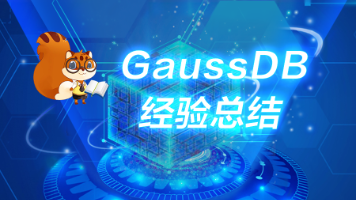Elasticsearch中object类型与nested类型之间的区别
深入理解Elasticsearch中object类型与nested类型之间的区别
一、区别:
1、默认情况下ES会把JSON对象直接映射为object类型,只有手动设置才会映射为nested类型
2、object类型可以直接使用普通的逗号(.)查询,比如"term": {"inspector.id": {"value": "1222"}}
3、nested类型的查询需要使用nested查询:"nested": {"path": "inspector","query": {"exists": {"field": "inspector.id"}}}
4、两种查询方式不兼容,如果大家想做改动的话,需要对java程序进行修改,风险比较大。
5、注意object类型的数组,查询的时候,结果可能是你不想要的值
二、ES对object类型进行索引的过程:
1、原始文档内容:
{
"tweet": "Elasticsearch is very flexible",
"user": {
"id": "@johnsmith",
"gender": "male",
"age": 26,
"name": {
"full": "John Smith",
"first": "John",
"last": "Smith"
}
}
}2、映射为object类型
Elasticsearch 会动态监测新的对象域并映射它们为 object类型,在 properties 属性下列出内部域:
{
"gb": {
"tweet": {
"properties": {
"tweet": { "type": "string" },
"user": {
"type": "object",
"properties": {
"id": { "type": "string" },
"gender": { "type": "string" },
"age": { "type": "long" },
"name": {
"type": "object",
"properties": {
"full": { "type": "string" },
"first": { "type": "string" },
"last": { "type": "string" }
}
}
}
}
}
}
}
}从上面的映射我们可以看到user 和 name 字段都被映射为"type":"object"
3、object的索引:
Lucene 不理解内部对象。 Lucene 文档是由一组键值对列表组成的。为了能让 Elasticsearch 有效地索引对象,对其进行了扁平化处理,它把我们的文档转化成这样:
{
"tweet": [elasticsearch, flexible, very],
"user.id": [@johnsmith],
"user.gender": [male],
"user.age": [26],
"user.name.full": [john, smith],
"user.name.first": [john],
"user.name.last": [smith]
}4、object类型的查询:
使用全路径进行查询 (例如, user.name.first )
5、object数组的索引:
假设我们有个 followers 数组:
{
"followers": [
{ "age": 35, "name": "Mary White"},
{ "age": 26, "name": "Alex Jones"},
{ "age": 19, "name": "Lisa Smith"}
]
}这个文档会像我们之前描述的那样被扁平化处理,结果如下所示:
{
"followers.age": [19, 26, 35],
"followers.name": [alex, jones, lisa, smith, mary, white]
}{age: 35} 和 {name: Mary White} 之间的相关性已经丢失了,因为每个多值域只是一包无序的值,而不是有序数组。于是我们不能得到一个准确的答案:“是否有一个26岁 名字叫 Alex Jones 的追随者?” 嵌套对象 就是来解决这个问题的。
三、ES对nested类型进行索引的过程:
1、原始文档内容:
PUT /my_index/blogpost/1
{
"title": "Nest eggs",
"body": "Making your money work...",
"tags": [ "cash", "shares" ],
"comments": [
{
"name": "John Smith",
"comment": "Great article",
"age": 28,
"stars": 4,
"date": "2014-09-01"
},
{
"name": "Alice White",
"comment": "More like this please",
"age": 31,
"stars": 5,
"date": "2014-10-22"
}
]
}2、映射为nested类型并索引:
将 comments 字段类型设置为 nested 而不是 object 后,每一个嵌套对象都会被索引为一个 隐藏的独立文档 ,举例如下:
{
"comments.name": [ john, smith ],
"comments.comment": [ article, great ],
"comments.age": [ 28 ],
"comments.stars": [ 4 ],
"comments.date": [ 2014-09-01 ]
}
{
"comments.name": [ alice, white ],
"comments.comment": [ like, more, please, this ],
"comments.age": [ 31 ],
"comments.stars": [ 5 ],
"comments.date": [ 2014-10-22 ]
}
{
"title": [ eggs, nest ],
"body": [ making, money, work, your ],
"tags": [ cash, shares ]
}在独立索引每一个嵌套对象后,对象中每个字段的相关性得以保留。我们查询时,也仅仅返回那些真正符合条件的文档。
3、注意事项
3.1、由于嵌套文档直接存储在文档内部,查询时嵌套文档和根文档联合成本很低,速度和单独存储几乎一样。
3.2、嵌套文档是隐藏存储的,我们不能直接获取。如果要增删改一个嵌套对象,我们必须把整个文档重新索引才可以。
3.3、查询的时候返回的是整个文档,而不是嵌套文档本身
4、nested类型的查询:
由于嵌套对象 被索引在独立隐藏的文档中,我们无法直接查询它们。 相应地,我们必须使用 nested 查询 去获取它们:
GET /my_index/blogpost/_search
{
"query": {
"bool": {
"must": [
{
"match": {
"title": "eggs"
}
},
{
"nested": {
"path": "comments",
"query": {
"bool": {
"must": [
{
"match": {
"comments.name": "john"
}
},
{
"match": {
"comments.age": 28
}
}
]
}
}
}
}
]
}}}更多推荐
 已为社区贡献3条内容
已为社区贡献3条内容









所有评论(0)